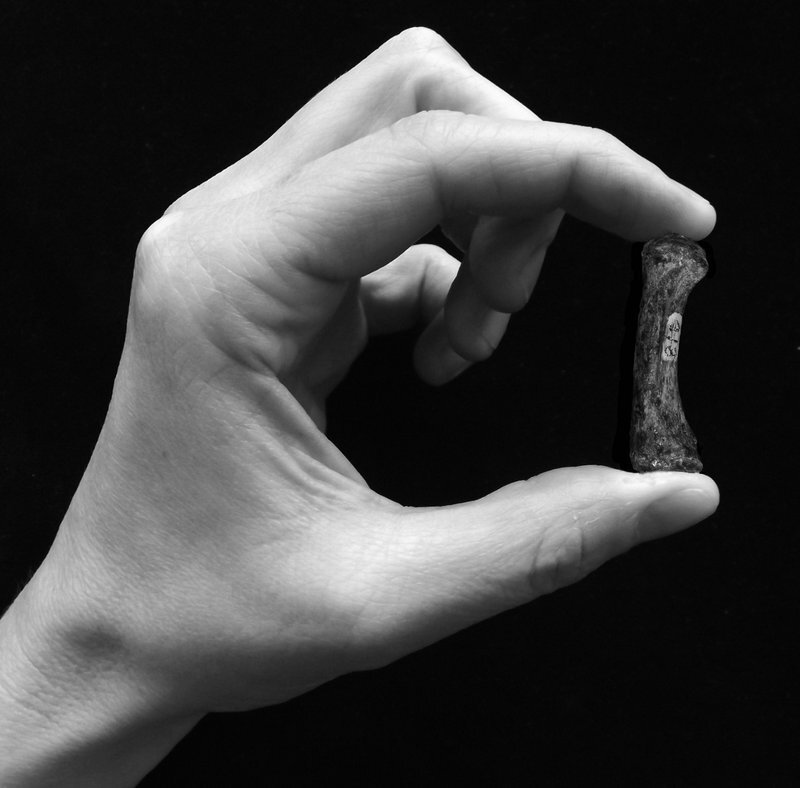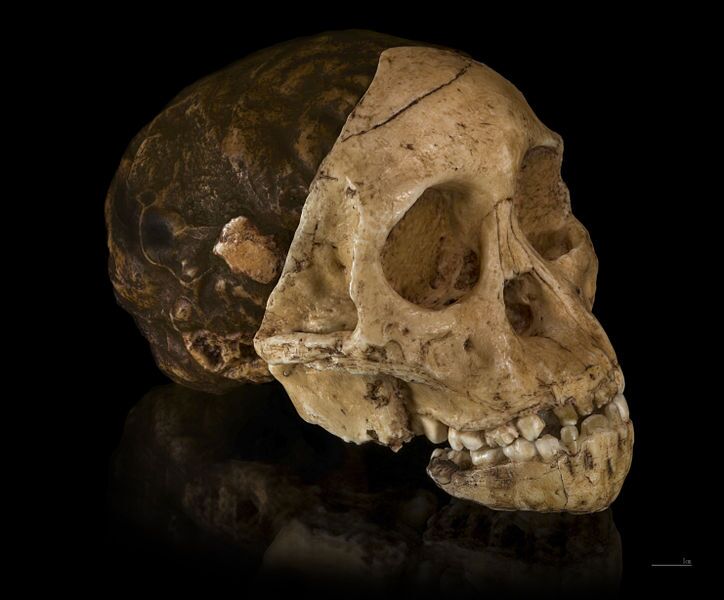
Researchers have come across ancient anatomical evidence that suggests that Australopithecus africanus, a hominin species thought to be an ancestor of humans, sported hands capable of making and using stone tools, a capability until now reserved only for the later hominins.
The discovery pushes back the clock of possible tool use to as much as about 3 million years ago, possibly pre-dating the earliest known archaeological record of stone tools, which is dated to about 2.6 million years ago.
Led by Matthew Skinner and T.L. Kivell of the UK’s University of Kent, along with researchers from University College London, the Max Planck Institute for Evolutionary Anthropology in Leipzig (Germany) and the Vienna University of Technology (Austria), the study involved examining the internal spongey bone structure of Australopithecus hand fossils from the Pliocene Epoch, fossils dated to 5.3 to 2.6 million years ago. Trabecular bone is important in this case because it typically changes its structure through the lifetime of an individual, depending upon the individual’s lifestyle or behavior.
The researchers first examined and compared the trabeculae of the hands of humans and chimpanzees. They observed distinct differences between modern humans, including other more ancient human species such as Neanderthals, who have a unique ability for precision gripping between thumb and fingers, critical for tool-making and use, and chimpanzees, who do not have the same ability.
“We initiated the study when we realized that by using microCT scanning we could image the internal structure of bones to reveal how they were loaded during particular behaviours,” said Skinner. “Once we had evidence for the characteristic human forceful precision grip in human hands compared to chimpanzees, we decided to see whether this signal was present in a pre-Homo species such as Australopithecus africanus.”
Their analysis was eye-opening—they observed that the pattern of trabeculae within the Australopithecine samples suggested the same precision grip ability—a key feature usually considered unique to humans.
_______________________________________
 An example of a human precision grip, grasping an Australopithecus africanus first metacarpal (StW 418) of the thumb (3-2 million years old). Credit: T.L. Kivell & M. Skinner
An example of a human precision grip, grasping an Australopithecus africanus first metacarpal (StW 418) of the thumb (3-2 million years old). Credit: T.L. Kivell & M. Skinner
________________________________________
 Top row: First metacarpals of the thumb in (from left to right) a chimpanzee, fossil hominins Australopithecus africanus (StW 418) and two specimens belonging to either a robust australopith or early Homo (SKX 5020 and SK 84), and a human. The bottom row shows 3D renderings from the microCT scans of the same specimens, showing a cross-section of the trabecular structure inside. Ma, million years ago. Credit: T.L. Kivell
Top row: First metacarpals of the thumb in (from left to right) a chimpanzee, fossil hominins Australopithecus africanus (StW 418) and two specimens belonging to either a robust australopith or early Homo (SKX 5020 and SK 84), and a human. The bottom row shows 3D renderings from the microCT scans of the same specimens, showing a cross-section of the trabecular structure inside. Ma, million years ago. Credit: T.L. Kivell
__________________________________________
Until now, the first stone tool making had generally been associated with an early human called Homo habilis, a species of humans thought by many scholars to be directly ancestral to humans and whose remains have been accompanied by simple stone tools classified into a primitive technology called the Oldowan, the first stone tools. The first fossil remains of this species was discovered by Mary and Louis Leakey in 1960 at Olduvai Gorge, Tanzania.
Now, however, Skinner, et al.’s findings suggest the possibility that an older “less human” hominin species, Australopithecus africanus, had the anatomical capability of producing such simple stone tools. The results support previously published archaeological evidence for possible stone tool use in australopiths and provide skeletal evidence that our early ancestors used human-like hand postures much earlier and more frequently than previously considered.
Australopithecus africanus is an early hominid, or australopithecine, that lived as much as 3 million years ago and whose fossil remains have been found in several South African sites. Raymond Dart first named or identified the species in 1924 when the well-preserved skull of a child specimen was uncovered in a lime mine at Taung near Kimberley, South Africa.
__________________________________________
 Skull and endocast of the famous Taung child australopithecus specimen. Courtesy Didier Discouens, Wikimedia Commons
Skull and endocast of the famous Taung child australopithecus specimen. Courtesy Didier Discouens, Wikimedia Commons
__________________________________________
Details of the study* have been published in the journal Science, a publication of the non-profit scientific organization, the American Association for the Advancement of Science.
________________________________________________________
*”Human-like hand use in Australopithecus africanus,” by M.M. Skinner; T.L. Kivell at University of Kent in Canterbury, UK; M.M. Skinner; A.C. Foote at University College London in London, UK; M.M. Skinner; N.B. Stephens; Z.J. Tsegai; N.H. Nguyen; J.-J. Hublin; T.L. Kivell at Max Planck Institute for Evolutionary Anthropology in Leipzig, Germany; M.M. Skinner; T.L. Kivell at University of the Witwatersrand in Wits, South Africa; T. Gross; D.H. Pahr at Vienna University of Technology in Vienna, Austria.
Some content for this article was adapted and edited from the University of Kent press release, Early human ancestors used their hands like modern humans.
________________________________________________
Read about the most fascinating discoveries with a premium subscription to Popular Archaeology Magazine. Find out what Popular Archaeology Magazine is all about. AND MORE:
On the go? Get the smartphone version of Popular Archaeology as an app or as an ebook.
Just released!
The special new premium quality print edition of Popular Archaeology Magazine. A beautiful volume for the coffee table.
Travel and learn with Far Horizons.
____________________________________________
Popular Archaeology’s annual Discovery Edition eBook is a selection of the best stories published in Popular Archaeology Magazine in past issues, with an emphasis on some of the most significant, groundbreaking, or fascinating discoveries in the fields of archaeology and paleoanthropology and related fields. At least some of the articles have been updated or revised specifically for the Discovery edition. We can confidently say that there is no other single issue of an archaeology-related magazine, paper print or online, that contains as much major feature article content as this one. The latest issue, volume 2, has just been released. Go to the Discovery edition page for more information.








